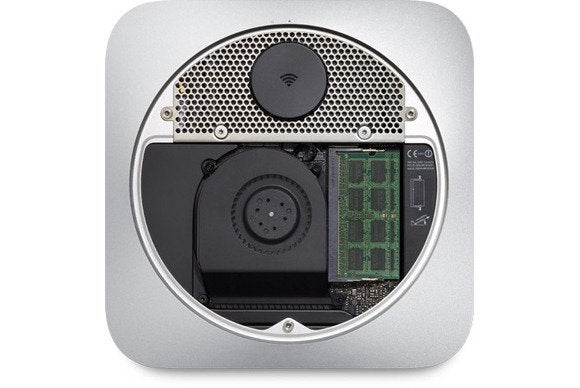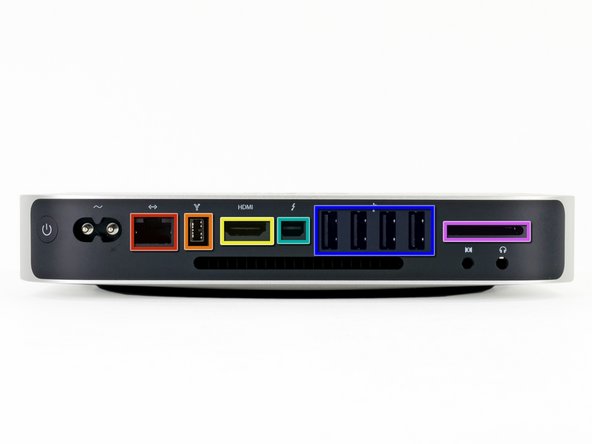Fusion Drive, a storage option on some iMac and Mac mini computers, combines a hard drive and flash storage in a single volume for improved performance and storage capacity. If your Fusion Drive appears as two drives instead of one in the Finder, it's no longer working as a Fusion Drive. This can happen after replacing either drive of your Fusion Drive, or using software to intentionally split them into separate volumes.
Hello all, I've been pondering about pulling the trigger and get a 2018 Mac Mini. Seeing that the RAM is user upgradable, I was wondering if I could get away with something else and buy the cheapest model (only upgrading the processor), AND THEN, create a Fusion Drive with both the internal 128 GB drive and a huge 5 TB external HDD. When Apple first launched the Fusion Drive back in 2012 the SSD component was 128GB. Rather disappointingly, back in 2015 Apple reduced the flash component in. Apple Mac mini, 2.8GHz Intel Core i5 Dual Core, 8GB RAM, 1TB Fusion Drive, Mac OS, Silver, MGEQ2LL/A (Newest Version) (Renewed) 4.0 out of 5 stars 20 $709.87 $ 709. 1TB Hitachi hard drive (from a Mac mini) and 250GB OWC Mercury Extreme SSD. You need two drives to make a Fusion Drive, and if you want to get the speed boost, one should be an SSD. Programs repeatedly crashing on my late 2012 Mac Mini Fusion Drive. I have a late 2012 Mac Mini Fusion Drive 2.6ghz, 16gig RAM running Mac OSX 10.9.4. For the past week or so I have had a number of programs - both Apple and third party apps crash repeatedly, I have repaired permissions and restarted numerous times but nothing seems to fix it.

You can continue using the two drives independently, or follow these steps to regain the benefits of having the single logical volume of a Fusion Drive.
Before you begin
If you're not sure that your Mac was configured with a Fusion Drive, or that the drive has been split:
- Disconnect any external storage devices from your Mac.
- Choose Apple menu > About This Mac, then click Storage.
- If you see a drive labeled Fusion Drive, your Fusion Drive is working and this article doesn't apply to you.
- If you have a Fusion Drive that has been split, you should see two drives. One of them should be labeled Flash Storage, with a capacity of 24GB, 32GB, or 128GB. The other should be at least 1TB.
Mac Fusion Drive Review
Use Terminal to create a Fusion Drive again

These steps permanently delete all data stored on the drives that make up your Fusion Drive. Make sure that you have a backup before continuing.


If you're using macOS Mojave or later
- Turn on your Mac, then immediately press and hold Command-R to start up from macOS Recovery. Release the keys when you see the Apple logo or spinning globe.
- When you see the macOS Utilities window, choose Utilities > Terminal from the menu bar.
- Type
diskutil resetFusionin the Terminal window, then press Return. - Type
Yes(with a capital Y) when prompted, then press Return. - When Terminal indicates that the operation was successful, quit Terminal to return to the macOS Utilities window.
- Choose Reinstall macOS, then follow the onscreen instructions to reinstall the Mac operating system. Your Mac restarts from your Fusion Drive when done.

If you're using macOS High Sierra or earlier
Fusion Drive For Mac Mini 2012 Manual
- Turn on your Mac, then immediately press and hold Command-R to start up from macOS Recovery. Release the keys you see the Apple logo or spinning globe.
- When you see the macOS Utilities window, choose Utilities > Terminal from the menu bar.
- Type
diskutil listin the Terminal window, then press Return. - Terminal displays a table of data about your drives. In the IDENTIFIER column, find the identifier for each of the two internal, physical drives that make up your Fusion Drive. Usually the identifiers are disk0 and disk1. One of them should be 128GB or less in size. The other at least 1TB in size.
- Type the following command, replacing identifier1 and identifier2 with the identifiers you found in the previous step. Then press Return.
Example: diskutil cs create Macintosh HD disk0 disk1
- If you get a disk unmounting error, enter
diskutil unmountDisk identifier, using the first identifier you gathered previously. Then enter same command again using the second identifier. Then retry the command in step 5. - Type
diskutil cs list, then press Return. - Terminal displays additional data about your drives (volumes). Find the string of numbers that appears after ”Logical Volume Group” for the volume named Macintosh HD. It's a number like 8354AFC3-BF97-4589-A407-25453FD2815A.
Example:
+-- Logical Volume Group 8354AFC3-BF97-4589-A407-25453FD2815A
|
| Name: Macintosh HD - Type the following command, replacing logicalvolumegroup with the number you found in the previous step. Then press Return.
Example: diskutil cs createVolume 8354AFC3-BF97-4589-A407-25453FD2815A jhfs+ Macintosh HD 100%
- When Terminal indicates that the operation was successful, quit Terminal to return to the macOS Utilities window.
- Choose Reinstall macOS, then follow the onscreen instructions to reinstall the Mac operating system. Your Mac restarts from your Fusion Drive when done.
